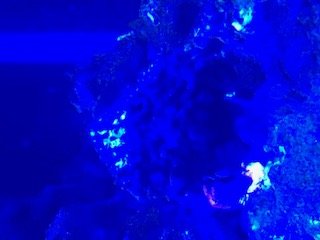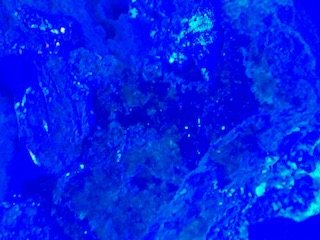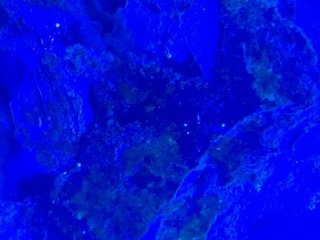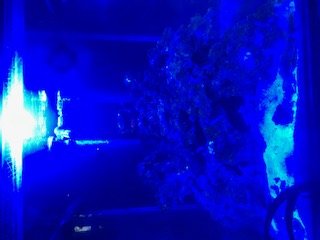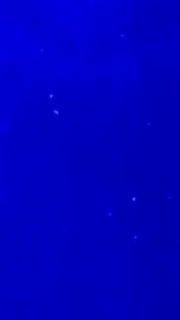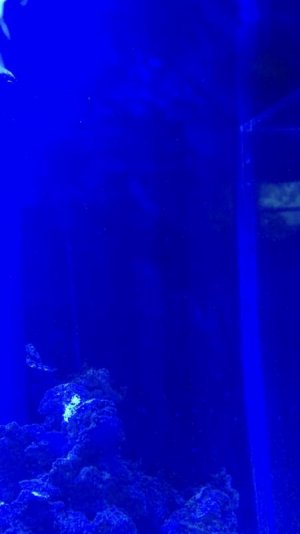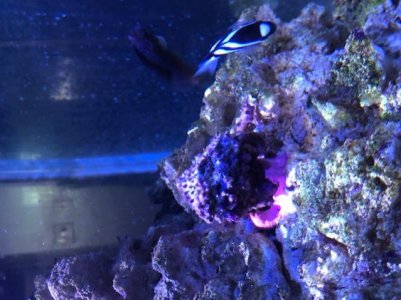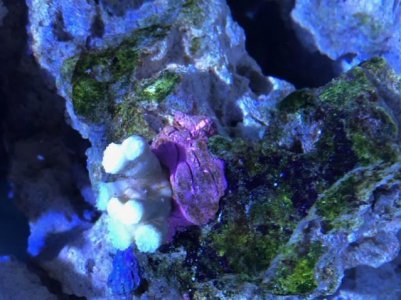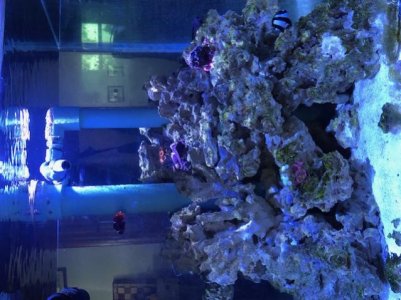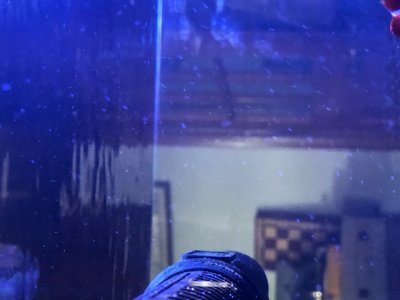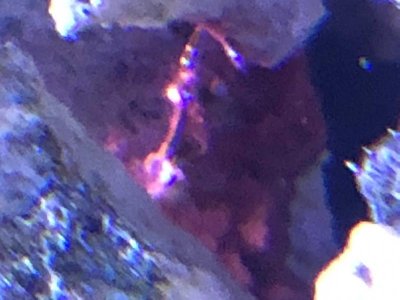Not sure where you got your facts,
Hey Phil - I am a hobby aquarist so established experts and their reports, is the only source available to me. Reading anecdotal reports online is obviously entertaining but unfortunately not much use as a source, which is why we all distrust eachother instead of listening to new information with interest.
but while some anemones are not reef dwellers (haddoni, LTA, malus) many (gigantea, BTA, H. magnifier, H. crisps, S. mertensii) do live on the reef in close proximity to corals and even intermingled within the coral branches.
This is about shallow-, middle- and deepwater setups, not a questionnaire about the ability of sealife to climb onto land. Some anemones are found right on top of the beach, the biggest types prefer somewhat better space obviously. It just means the bigger nems does not live on top of river outlets as often as the beach-climbing stingers.
You say that shallowwater dwellers also live near reefs, yes correct - there are many shallowwater corals. Just like the anemone-families of stingers, the shallowwater corals often need more nutrient-rich water & can handle muddied waters, which deepwater dwellers cannot. We can also just talk about the needs of rainbow bottom anemones, then anemones need cold water and no light at all but right now we were on about a somewhat normal saltwater setup.
*A myth* circulating online about anemones: is that they need "nothing but light" to stay alive. If the anemone is never fed and the water is kept at zero nutrients because it is really calibrated to suit deepsea dwellers, some anemones does not actually survive, even though supplied with photosynthetic activity. Anemones, can absorb both ammonia and nitrates, not something readily available in all setups.
Obviously the anemone fish that live in these anemones are quite used to having other reef fish around them and routinely drive away butterfly fish that could otherwise eat the anemone.
Anemonefishes are a damsel and quite old. They are based in nesting in family groups and comes in several distinct types. They are also very different from one another. They have the commonality of being anemonefishes, so your generalisation seems brought on by either a need to cherry-pick your arguments or general lack of knowledge about the fishes.
The more aggressive types are easily recognisable on them being more red, and much larger, than the commonly kept amphiprion percula and a. ocellaris. Although some people use the more aggressive behaviour to endorse mixing clownfish with reef swimmers, none of the fishes live in that close proximity to eachother in the wild and the fish will live it's whole life in *defend my territory* behaviour mode, which is somewhat limiting the natural behaviour of the creature.
- Amphiprion percula & a. ocellaris move with [left-to-right] motion and are orange, white and black, small and with medium-thick membrane tissue over their dorsal spines.
- Premnas biaculeatus, the anemonefishes that lives in the solitary form of entacmaea quadricolor, are left-to-right swimmers and have more membrane on their dorsalspikes to not hurt their rock-hiding anemone host, than anemonefishes that dwell with sandy based nems. The p. biaculeatus also have pointy spines on their cheeks. These spines will not be on the fishes that have more open water around them (they prefer to use their chin to anchor to surfaces but they do nip eachother on the same spot on the cheek as the spine-cheeked fishes).
- Amphiprion polymnus is medium sized and medium aggressive, their pectoral fins are yellow but can lack colour because of nutrition, their main families are coloured black and white while some outerzone variations also range from dark coffeebrownish, to brighter orangery colours. Their females have a droplet shape and velvet black eyes. Their males have more slender shapes and their eyes change colour ranging between dark golden brown and pale golden grey. These fishes have veil-like membranes and swim with [up-and-down] motion.
I do not intend to go through all the types of fishes generally united into the term *clownfishes* because it is like talking about *keeping monkeys*, one really have to get a little deeper into what kind of clownfish, if any, is right for individual aquarium setups.
None of these fishes survive in the wild without nesting in anemones.
Anemone fish are so aggressive in fact that many will try to chase divers away from their home. They tend to rule the roost in a mixed reef tank.
Yes correct, that is what they do, nest and chase away stuff from the nest. They spend their free time memorising swim patterns, work together as a pack and they may use their anemone as a weapon against other fishes, it all does give them some tools to stand their own against the freewater swimmers. Anemonefishes are trick swimmers that lives up to 7 times the life expectancy of fishes of similar size. They survive by teaching eachother how to use the ocean currents to their advantage, while living with parent- and sometimes even grandparent-generations in their nesting family. They spend -all their lives- standing in one spot and swimming around that one spot, and are usually the offspring of the fishes that nest in that anemone. They also recruit juvenile fishes from the surrounding families but the larvae detect traces in the water that makes them seek out populated nests automatically. For well established a. polymnus nests, the selfrequirement vs. strangerrecruitment in the wild was aprox 80% vs. 20%. ALL they do, every day, is circle around their anemone (in circles). They stand at the most optimal points for current and food, throughout the day hours. At morning and dusk, they circle around some more and the female makes sure her nest is supertight and the male & juveniles will come to check that they have good spots to sleep and they will play around and so forth. If they have sand-dwelling anemones the females may dig around to supply better sleeping grounds for her young, and she will show her swimming skills to young that is possible still in the process of recruitment into the family.
- Always introduce juvenile clowns in the spot you prefer them to stay in, because they will build up their brains' map of the surroundings, from that spot & outwards. They stand with their face into the current so they can see food coming towards them and love to balance in the current near powerheads & corners, ready to jump into the current at speed.
When the aquarists forces the day, of anemonefishes, to always be tightly packed with close neighbours, their territory becomes smaller and smaller, compared to its natural state. Sometimes, anemonefishes are known to rip through, anemones. This happens because of the way the Anemonefishes' species, mark territory.
- They will make a specific motion, let us call it *All My Power in a slap to Scare away strangers*.
They do that motion, to stir up zooplankton and to show the other fishes, or humans outside the glass, that the territory belongs to them and how big and strong they are. This is especially rampant with wild caught fishes, tank-raised fishes seem far less scared of potential death from all angles. The movement is instinctual, the aquarist cannot stop the fish from using that move to mark territory.
The aquarist can only make sure the anemonefishes have enough territory around their anemone, to mark their territory, somewhere else than inside the guts of the defenceless anemone.
People without anemones who do keep clownfishes, might see fishes that survive but online forums are also full of people who cannot understand what is killing their clowns, I have no idea why there should be any dismissive response to informing people more about the lifeforms but keeping aquaria is not about keeping landscapes that moves pleasingly all over. It is about living creatures & we all want to see them be in good homes. Anemonefishes are family fishes that learns through observation, their behaviour becomes twisted faster than types of fishes that are mostly instinctual and they are supposed to grow up with a parent-couple or even two generations of older fishes, right by their side to teach them everything.
I just try to give in depth inspiration for people to futher study their own passions. If you just want people to know how to put fishes into water and force them to live there, I suggest that you watch otherwise beautiful videos like this one:
https://m.youtube.com/watch?v=cVOJcKfZZCU
